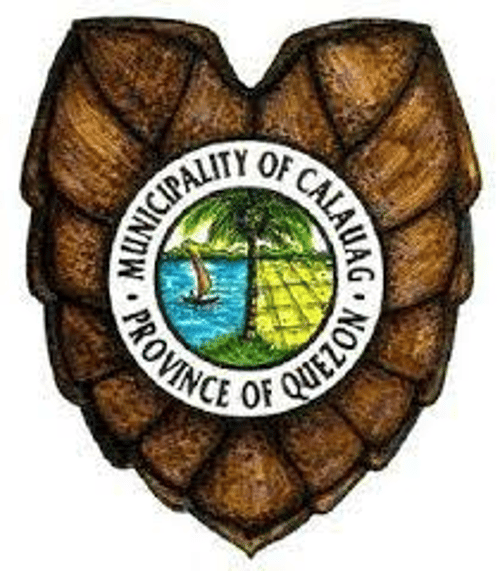2 sa Pinaka Nakapinsalang Bagyo sa Calauag, Bansa
Super Typhoon “ROSING” (Angela)
October 30-November 4, 1995
260 kph
936 deaths
PhP 10.829B damage
Core (Eye & Eyewall) Track: Northern tip of Catanduanes; Siruma and Quinabucasan Point, Northern coastal areas of Camarines Sur; Daet and the rest of the Northern coast of Camarines Norte; Mauban, Quezon; Santa Cruz and the southern shore towns of Laguna Lake, Laguna; southern portions of National Capital Region including Cavite City; Southern tip of Bataan specifically Mariveles incl. Corregidor Is.
ROSING was one of the strongest typhoons in the Philippines to hit land with gusts reaching up to 260 kph as it approached the Bicol Region at late evening of All Saint's Day (see figures 3 & 4).
This large-sized typhoon just came a day after Typhoon Pepang ravaged Leyte, Cebu, Negros and Panay.
ROSING was quite slow-moving and erratic as it approached the country early morning of October 30 prompting authorities to alert a wide area of the Visayas up to Northern Luzon.
By the morning of November 2, ROSING's path changed sharply from northwest to a westward track and threatened to hit Catanduanes but its eye just skirted along the island's northern coast, that evening and moved to target Northern Camarines Norte. Despite the quick strike, Catanduanes was heavily devastated.
Threatening Daet, it moved again slightly west and made landfall by dawn of November 3 at Siruma, Camarines Sur which lies at the mouth of San Miguel Bay.
One resident of Caramoan, a nearby town, spoke on what she witnessed during the passage of its eye.
"It was eerie," she said. "the moon and some stars went out during the calm moment with continuous flashing of lightning somewhere along the area surrounding the eye."
Daet was directly hit after an hour by ROSING as she scoured more of Camarines Norte. Rosing's large eyewall, where the strongest winds and heaviest rainfall of a typhoon are located, was experienced to as far as Naga City as it passed 40 kilometers to the north.
After flattening thousands of houses, trees, electric posts and power lines the howler then crossed Lamon Bay toppling down large coconut groves and more infrastructures and houses of Calauag, Quezon and spawned storm surges in the Quezon coastline as with the rest of the province.
Landslides blocked roads in the mountainous regions of the province.
By mid-morning of that day, it started to wreak havoc in Laguna then later Metro Manila as far as Cavite and Bulacan destroying glass windows and panels of high-rise buildings, skyscrapers and other infrastructures.
Metal and steel trusses of buildings, neon billboards and even large flagpoles were twisted, uprooted and destroyed.
By noon, ROSING crossed Manila Bay devastating more at Southern Bataan and exited to the South China Sea by early morning of the next day.
It was a full 60 hours of winds greater than 240 kph which was not even affected by prolonged land interaction.
Dead and bloated bodies of people, cattle and other animals were floating in Calauag Bay after the typhoon with others mangled and decomposing along the seacoast.
Aerial surveys of Quezon Province and Bicol right after ROSING were described to be "a severe natural calamity to the maximum degree. Truly a wrath of nature's violent fury."
__________
Super Typhoon “SENING” (Joan)
October 11-15, 1970
275 kph
768 deaths
PhP 1.89B damage
Core (Eye & Eyewall) Track: Virac Point, Catanduanes; Sagñay and Naga City in Camarines Sur; inner portion of Ragay Gulf, Calauag, Lopez Bay coastline, Atimonan and Lucban in Quezon; towns at the southern and southwestern shore of Laguna Lake in Laguna; Cavite; southern outskirts of National Capital Region; Mariveles and Lima in Bataan.
SENING held the record as strongest typhoon in the Philippines for 36 years (1970-2006) clocking 275 kph. She heralded the famous 1970 "triplet" super typhoons that came one after each other in a span of days and weeks only, devastating populated areas of the country (see figures 15 & 16).
SENING was a horrifying typhoon swirling towards Samar and Leyte by the evening of October 11. As Samar and the rest of the Visayas were bracing for the typhoon by the early afternoon of October 12,
SENING started moving northwesterly sparing the Visayas and now threatening the Catanduanes and the Bicol peninsula. By the morning of the next day, Bicol was already feeling SENING's fury as it seemed to target Virac.
Before lunchtime, SENING grazed Virac and Catanduanes' southern coast unleashing severe damage. It then moved at Lagonoy Gulf, churning the sea into a violent monster that ravaged the shorelines of Albay and Camarines Sur.
By early afternoon, around 1:30pm, Oct 13, SENING's eye bore down directly over Naga City that momentarily gave its citizens its awesome calmness.
A little over a few minutes later the calm of the eye started to end as the eastern eyewall of the howler came closing in destroying countless homes, infrastructures, electric posts and thousands of trees.
Naga was the first and largest city SENING wrecked in its course. Scores died from flying debris, collapsing homes, falling trees and electric posts, and floods.
By evening the howler crossed Ragay Gulf and went on to destroy southern Quezon killing more and injuring thousands until midnight.
SENING went on to ravage Laguna, Cavite and the rest of the National Capital Region by dawn of October 14 inflicting major damage to major urban residential, industrial and commercial centers of the metro.
Large neon signs and billboards in the metropolitan were twisted, broken and totally destroyed scattering hazardous debris in the streets downtown.
It then crossed Manila Bay from Cavite's capital to unleash fury to southern Bataan and then to South China Sea by the afternoon of the same day.
article by: www.typhoon2000.ph
